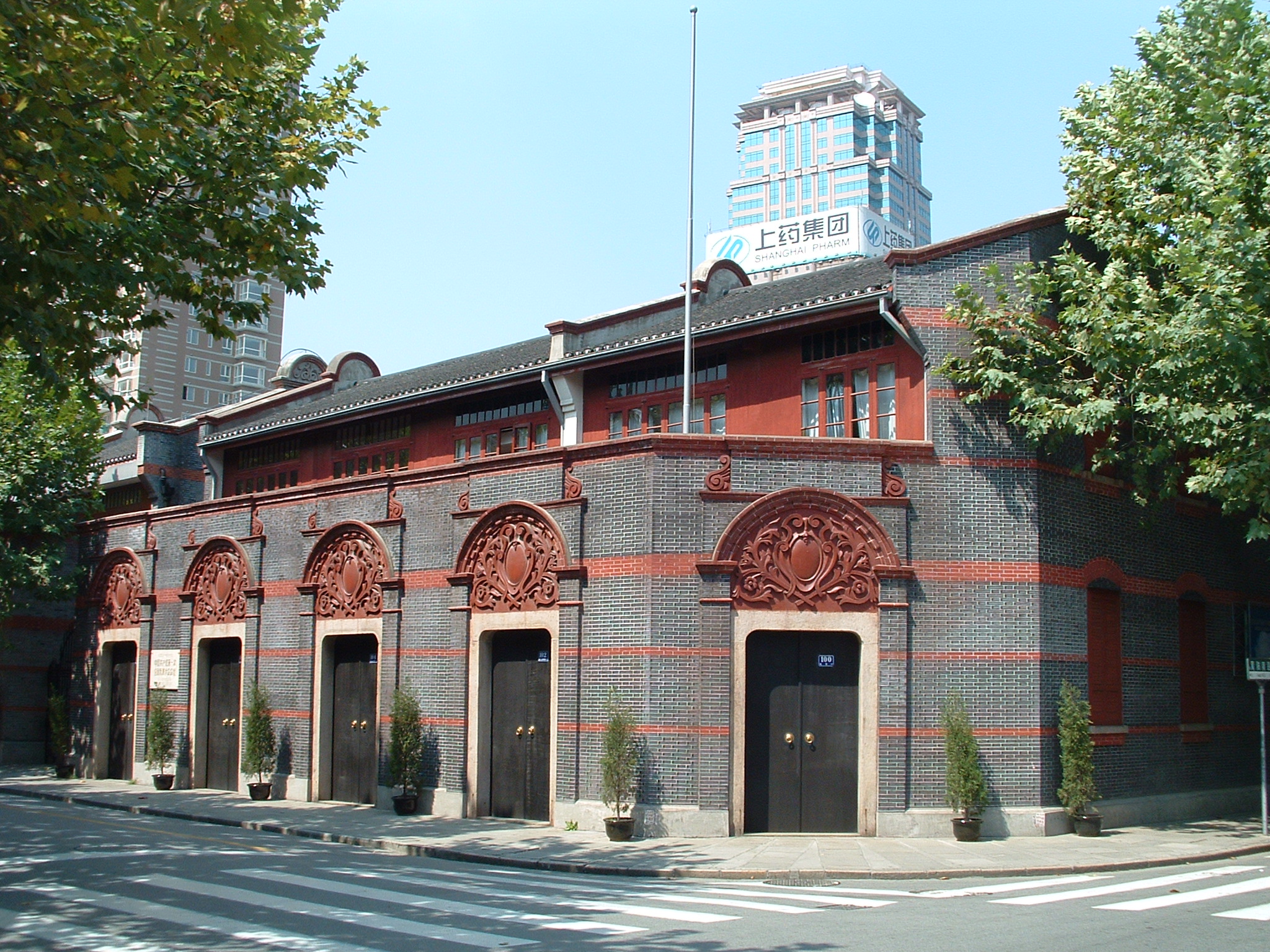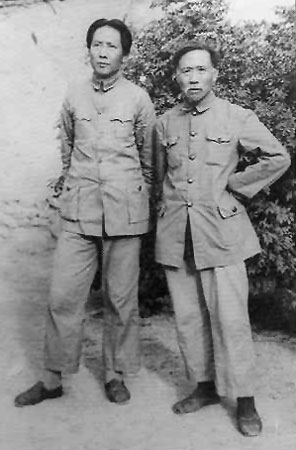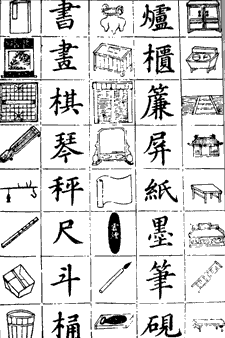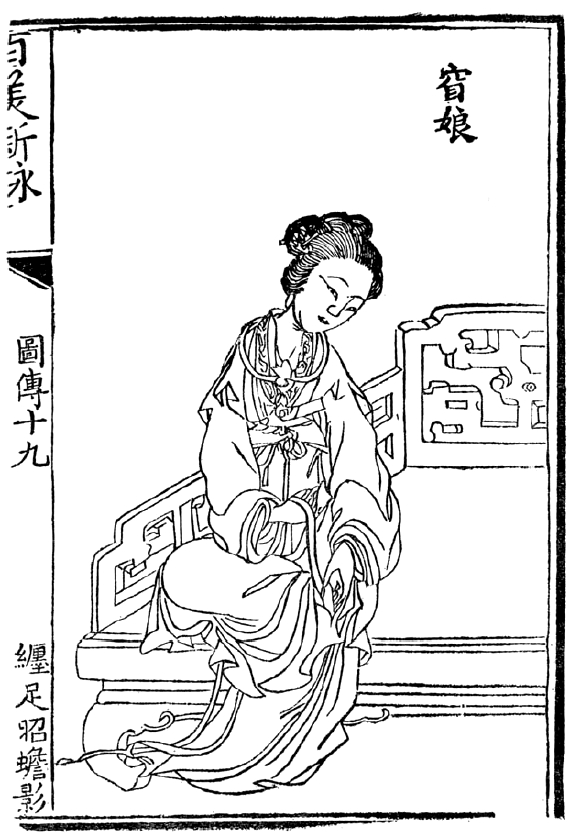|
Li Binzhu
Li Binzhu (; 8 November 1921 – 12 July 2007) was a Chinese-Austrian judge and politician. She was a long-time fighter in the war of the Second Sino-Japanese War. She developed a school model for literacy of rural women. In 1945, she married Austrian physician Richard Frey, an Anti-fascism, antifascist fighter in Yan'an. In the period of the civil war and after the founding of the People's Republic of China she worked as a judge, later as a process leader and as a commissioner in the People's Procuratorate. In 1958 she and her husband had to give up their posts for political reasons. She then worked as a principal in a high school and became a critic of the political movements Anti-Rightist Campaign and Great Leap Forward. In 1959, under political pressure, she finally had to annul her marriage and raise her three children on her own. After overcoming a severe depression, she worked until her retirement in 1982 as a party secretary in the clothing industry. She died 2007 in Vie ... [...More Info...] [...Related Items...] OR: [Wikipedia] [Google] [Baidu] |
Li (surname 李)
Li or Lee (; ) is a common Chinese-language surname, it is the 4th name listed in the famous ''Hundred Family Surnames.'' Li is one of the most common surnames in Asia, shared by 92.76 million people in China, and more than 100 million in Asia. It is the second most common surname in China as of 2018, the second most common surname in Hong Kong, and the 5th most common surname in Taiwan, where it is usually romanized as "Lee". The surname is pronounced as () in Cantonese, ''Lí'' ( poj) in Taiwanese Hokkien, but is often spelled as "Lee" in Hong Kong, Macau, Taiwan and many overseas Chinese communities. In Macau, it is also spelled as "Lei". In Indonesia it is commonly spelled as "Lie". The common Korean surname, "Lee" (also romanized as "I", "Yi", "Ri", or "Rhee"), and the Vietnamese surname, " Lý", are both derived from Li and written with the same Chinese character (李). The character also means "plum" or "plum tree". Demographics and distribution Li, Lee 李 is one ... [...More Info...] [...Related Items...] OR: [Wikipedia] [Google] [Baidu] |
Chinese Communist Party
The Chinese Communist Party (CCP), officially the Communist Party of China (CPC), is the founding and sole ruling party of the People's Republic of China (PRC). Under the leadership of Mao Zedong, the CCP emerged victorious in the Chinese Civil War against the Kuomintang, and, in 1949, Mao proclaimed the establishment of the People's Republic of China. Since then, the CCP has governed China with eight smaller parties within its United Front and has sole control over the People's Liberation Army (PLA). Each successive leader of the CCP has added their own theories to the party's constitution, which outlines the ideological beliefs of the party, collectively referred to as socialism with Chinese characteristics. As of 2022, the CCP has more than 96 million members, making it the second largest political party by party membership in the world after India's Bharatiya Janata Party. The Chinese public generally refers to the CCP as simply "the Party". In 1921, Chen Duxiu and ... [...More Info...] [...Related Items...] OR: [Wikipedia] [Google] [Baidu] |
China Medical University (PRC)
China Medical University () is a medical university in the city of Shenyang, Liaoning, China under the provincial and central governments. Rankings and Reputation The MBBS program at China Medical University has been taught in the English language since 1978. On U.S. News & World Report Best Global University Ranking by subject Clinical Medicine, it is ranked #345 in the world, #55 in Asia and #10 in China. It ranks among the top medical universities in China, according to CWTS Leiden Ranking 2018 and Chinese university ranking (CUAA) 2018. It is also approved by the Chinese Ministry of Education to recruit international students for its English-medium programs. On World Health Organization's World Directory of Medical Schools, the MBBS program is listed as taught in Chinese, Japanese and English. CMU has three large and modern affiliated hospitals, where students can do internship in the final year. Sheng Jing Hospital is famous for gynaecology and obstetrics. History Th ... [...More Info...] [...Related Items...] OR: [Wikipedia] [Google] [Baidu] |
Lin Boqu
Lin Boqu (; Pinyin: ''Lín Bóqú''; Wade-Giles: ''Lin Po-ch'u''; March 20, 1886 – May 29, 1960) was a Chinese politician and poet. An early supporter of Sun Yat-sen and member of the Tongmenghui, as well as a later participant in the Nanchang Uprising and the Long March, Lin came to be seen as one of the elder statesmen of the Chinese Communist Party. On October 1, 1949, Lin presided over the Communist Party's victory ceremony in Tiananmen Square, and stood on the right-hand side of Mao Zedong as he proclaimed the foundation of the People's Republic of China. Biography Lin Boqu, born Lin Zuhan (林祖涵), was raised in a rural family in a village near Changde, Hunan, and received a state grant to study in Tokyo at the age of 16. There, he joined the Tongmenghui, the revolutionary group founded by Sun Yat-sen. After returning to China, Lin worked as a school teacher, before he was recruited to the Dongbei region for revolutionary work on behalf of the Tongmenghui. Aft ... [...More Info...] [...Related Items...] OR: [Wikipedia] [Google] [Baidu] |
Manuscript Culture
A manuscript culture is a culture that depends on hand-written manuscripts to store and disseminate information. It is a stage that most developed cultures went through in between oral culture and print culture. Europe entered the stage in classical antiquity. In early medieval manuscript culture, monks copied manuscripts by hand. They copied not just religious works, but a variety of texts including some on astronomy, herbals, and bestiaries. Medieval manuscript culture deals with the transition of the manuscript from the monasteries to the market in the cities, and the rise of universities. Manuscript culture in the cities created jobs built around the making and trade of manuscripts, and typically was regulated by universities. Late manuscript culture was characterized by a desire for uniformity, well-ordered and convenient access to the text contained in the manuscript, and ease of reading aloud. This culture grew out of the Fourth Lateran Council (1215) and the rise o ... [...More Info...] [...Related Items...] OR: [Wikipedia] [Google] [Baidu] |
Obstructed Labour
Obstructed labour, also known as labour dystocia, is the baby not exiting the pelvis because it is physically block during childbirth although the uterus contracts normally. Complications for the baby include not getting enough oxygen which may result in death. It increases the risk of the mother getting an infection, having uterine rupture, or having post-partum bleeding. Long-term complications for the mother include obstetrical fistula. Obstructed labour is said to result in prolonged labour, when the active phase of labour is longer than 12 hours. The main causes of obstructed labour include a large or abnormally positioned baby, a small pelvis, and problems with the birth canal. Abnormal positioning includes shoulder dystocia where the anterior shoulder does not pass easily below the pubic bone. Risk factors for a small pelvis include malnutrition and a lack of exposure to sunlight causing vitamin D deficiency. It is also more common in adolescence as the pelvis may ... [...More Info...] [...Related Items...] OR: [Wikipedia] [Google] [Baidu] |
Beijing Institute Of Technology
Beijing Institute of Technology (abbreviated BIT; Simplified Chinese: 北京理工大学; Traditional Chinese: 北京理工大學; pinyin: Běijīng Lǐgōng Dàxué), is a national leading co-educational public university located in Beijing, China. It was established in 1940 in Yan'an, Shaanxi. It is a major research university under the supervision of the Ministry of Industry and Information Technology. BIT is a Chinese Ministry of Education Class A Double First Class University. As a member of Double First Class University Plan, Project 985 and Project 211 it is a leading multi discipline university given priority sponsorship from the Ministry of Education and the Beijing Municipal Government. BIT is ranked 201-300th in the WURI Global Top 100 Innovative Universities Ranking of 2021. History Yan'an period (1940–1946) Beijing Institute of Technology (BIT) has its origins in the Yan'an Research Academy of Natural Sciences (延安自然科学研究院). BIT was establish ... [...More Info...] [...Related Items...] OR: [Wikipedia] [Google] [Baidu] |
Mao Zedong
Mao Zedong pronounced ; also Romanization of Chinese, romanised traditionally as Mao Tse-tung. (26 December 1893 – 9 September 1976), also known as Chairman Mao, was a Chinese communist revolutionary who was the List of national founders, founder of the People's Republic of China (PRC), which he led as the chairman of the Chinese Communist Party from the Establishment of the People's Republic of China, establishment of the PRC in 1949 until Death and state funeral of Mao Zedong, his death in 1976. Ideologically a Marxist–Leninist, his theories, military strategies, and political policies are collectively known as Maoism. Mao was the son of a prosperous peasant in Shaoshan, Hunan. He supported Chinese nationalism and had an anti-imperialist outlook early in his life, and was particularly influenced by the events of the Xinhai Revolution of 1911 and May Fourth Movement of 1919. He later adopted Marxism–Leninism while working at Peking University as a librarian and bec ... [...More Info...] [...Related Items...] OR: [Wikipedia] [Google] [Baidu] |
Xu Teli
Xu Teli (; February 1, 1877 – November 28, 1968) was a politician of the People's Republic of China. Xu was the teacher of Mao Zedong, Cai Hesen, Xiao Zisheng, and Tian Han. Xu was a member of the 7th Central Committee of the Chinese Communist Party and the 8th Central Committee of the Chinese Communist Party. Biography Xu was born Xu Maoxun () in Changsha County, Changsha, Hunan on February 1, 1877, during the Qing Dynasty. At the age of four, his mother died. In 1885, by age nine, Xu was sent to school. At age eighteen, Xu set up a private school and taught there. In 1905, Xu attended the imperial examination when he was twenty-eight. After graduation, he became a teacher at Changsha Zhounan Girls' School. In 1907, Xu made a report on current affairs in the school, when he talked about the humiliating things of the corrupt government of Qing Empire, large tears began to fill his eyes and broke hot across his cheeks, Xu was indignation that he cut his little finger off ... [...More Info...] [...Related Items...] OR: [Wikipedia] [Google] [Baidu] |
Chinese Characters
Chinese characters () are logograms developed for the writing of Chinese. In addition, they have been adapted to write other East Asian languages, and remain a key component of the Japanese writing system where they are known as '' kanji''. Chinese characters in South Korea, which are known as '' hanja'', retain significant use in Korean academia to study its documents, history, literature and records. Vietnam once used the ''chữ Hán'' and developed chữ Nôm to write Vietnamese before turning to a romanized alphabet. Chinese characters are the oldest continuously used system of writing in the world. By virtue of their widespread current use throughout East Asia and Southeast Asia, as well as their profound historic use throughout the Sinosphere, Chinese characters are among the most widely adopted writing systems in the world by number of users. The total number of Chinese characters ever to appear in a dictionary is in the tens of thousands, though most are g ... [...More Info...] [...Related Items...] OR: [Wikipedia] [Google] [Baidu] |
Witch Doctor
A witch doctor (also spelled witch-doctor) was originally a type of healer who treated ailments believed to be caused by witchcraft. The term is now more commonly used to refer to healers, particularly in regions which use traditional healing rather than contemporary medicine. Original meaning of the term In its original meaning, witch doctors were not exactly witches themselves, but rather people who had remedies to protect others against witchcraft. Witchcraft-induced conditions were their area of expertise, as described in this 1858 news report from England: Recourse was had by the girl's parents to a cunning man, named Burrell, residing at Copford, who has long borne the name of "The Wizard of the North:" but her case was of so peculiar a character as to baffle his skill to dissolve the spell, Application was next made to a witch doctor named Murrell, residing at Hadleigh, Essex, who undertook to effect a cure, giving a bottle of medication, for which he did not forget to ... [...More Info...] [...Related Items...] OR: [Wikipedia] [Google] [Baidu] |
Foot Binding
Foot binding, or footbinding, was the Chinese custom of breaking and tightly binding the feet of young girls in order to change their shape and size. Feet altered by footbinding were known as lotus feet, and the shoes made for these feet were known as lotus shoes. In late imperial China, bound feet were considered a status symbol and a mark of feminine beauty. However, footbinding was a painful practice that limited the mobility of women and resulted in lifelong disabilities. The prevalence and practice of footbinding varied over time and by region and social class. The practice may have originated among court dancers during the Five Dynasties and Ten Kingdoms period in 10th-century China, and gradually became popular among the elite during the Song dynasty. Footbinding eventually spread to lower social classes by the Qing dynasty (1636–1912). Manchu emperors attempted to ban the practice in the 17th century, but failed. In some areas, footbinding raised marriage prospects. I ... [...More Info...] [...Related Items...] OR: [Wikipedia] [Google] [Baidu] |








